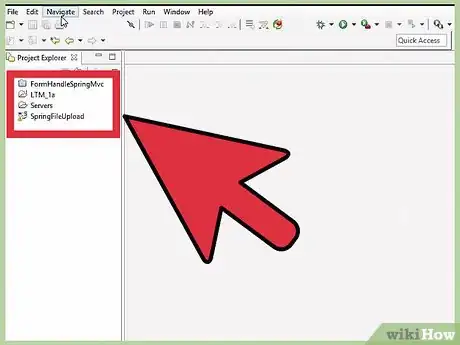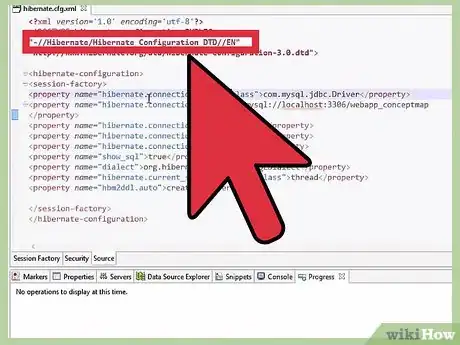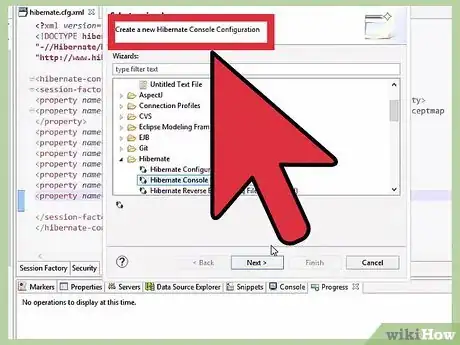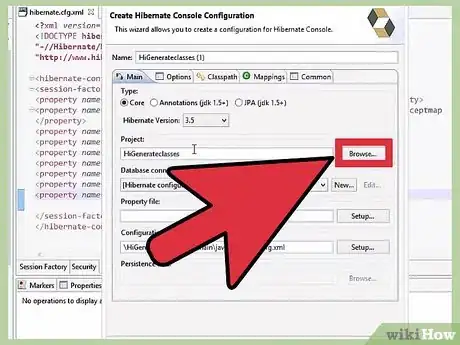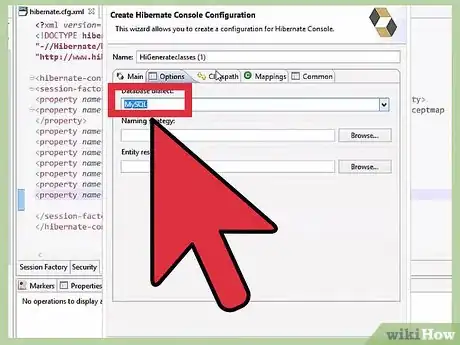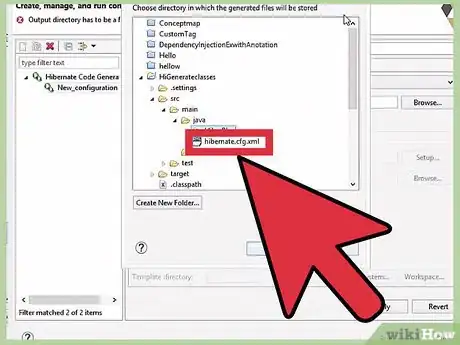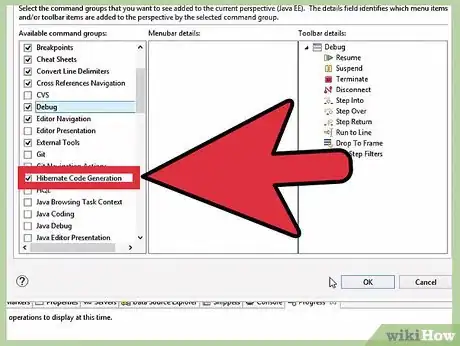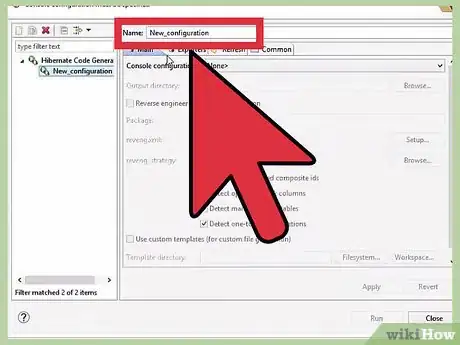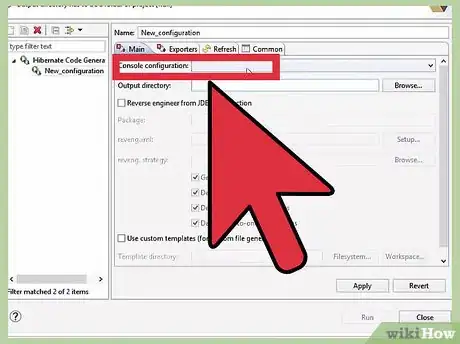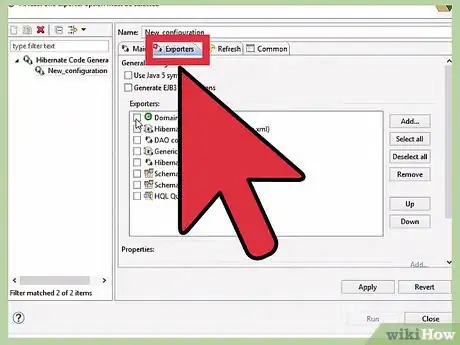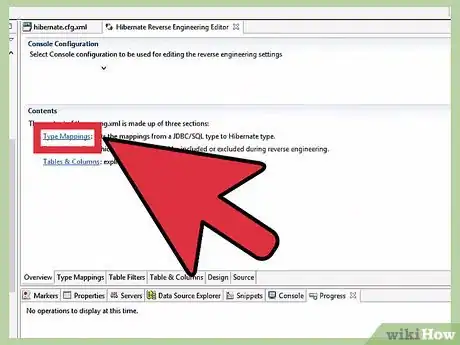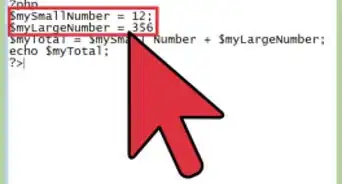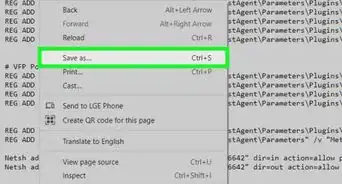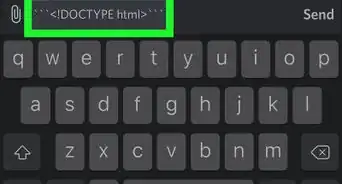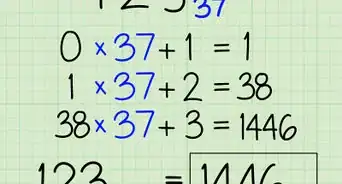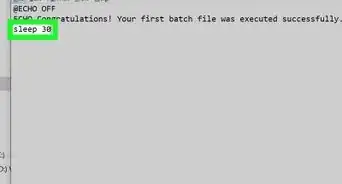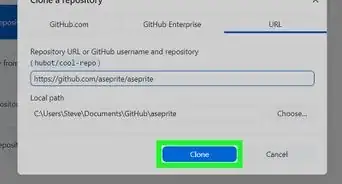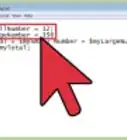wikiHow is a “wiki,” similar to Wikipedia, which means that many of our articles are co-written by multiple authors. To create this article, 21 people, some anonymous, worked to edit and improve it over time.
The wikiHow Tech Team also followed the article's instructions and verified that they work.
This article has been viewed 374,640 times.
Learn more...
Hibernate is a powerful, high performance object/relational persistence and query service. Hibernate uses JavaBean classes to represent database tables in memory. The columns of the table are represented by the fields of the java class. The class-to-table, field-to-column information is kept in XML files.
This explains the steps to reverse-engineer database tables to generate hibernate POJO classes and mapping XML files using hibernate-tools.
Steps
-
1Download Hibernate Tool and extract content to root folder of Eclipse (should merge plugins and features folders).
-
2Start eclipse.Advertisement
-
3Click on [File -> New -> Other -> Hibernate -> Hibernate Configuration File] and create a cfg file. The following properties should be specified : jdbc url , username, password, DB schema, driver class and dialect.
-
4Click on [File -> New -> Other -> Hibernate -> Hibernate Console Configuration ] and create a new console configuration. Add the jar file that contains your DB driver in the classpath section at the bottom.
-
5Enter the name of the console configuration. Click Browse button against the Configuration file and select the cfg.xml file created in step 3.
-
6Click on [File -> New -> Other -> Hibernate -> Hibernate Reverse Engineering File(reveng.xml) ] and select the location of the file.
-
7Select the cfg.xml file created in step 3 as the Console Configuration. Click on include button and specify the schema and table name(s) to reverse engineer. Multiple table names can be specified using sql wild char (eg: TBL_%). Click Finish.
-
8Switch to the Hibernate perspective and Click on the Hibernate icon in the tool bar and select the [Hibernate Code Generation ..] option.
-
9Right click on the [Hibernate Code Generation]tree node and select New.
-
10Give the name of the configuration and select the console configuration created in step 5 and reveng.xml created in step6-7. Also select the Output Directory and a relevant package.
-
11Go to the Exporters tab and check Generate domain code(.java) and Generate mappings (hbm.xml). Click run.
-
12The hibernate mapping xml files and Java classes will be created in the output directory specified in step 11.
References
- Eclipse - http://www.eclipse.org
- Hibernate - http://www.hibernate.org
- Hibernate Tools - http://tools.hibernate.org

